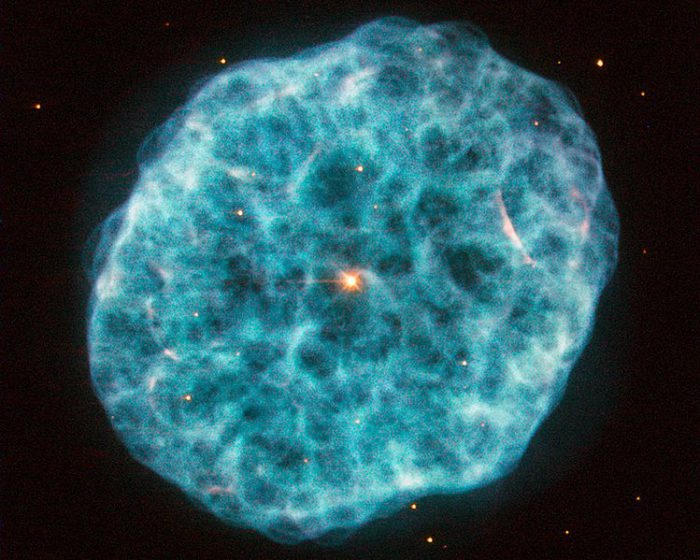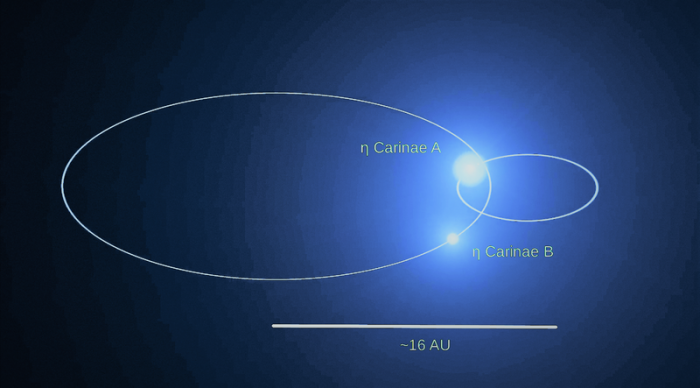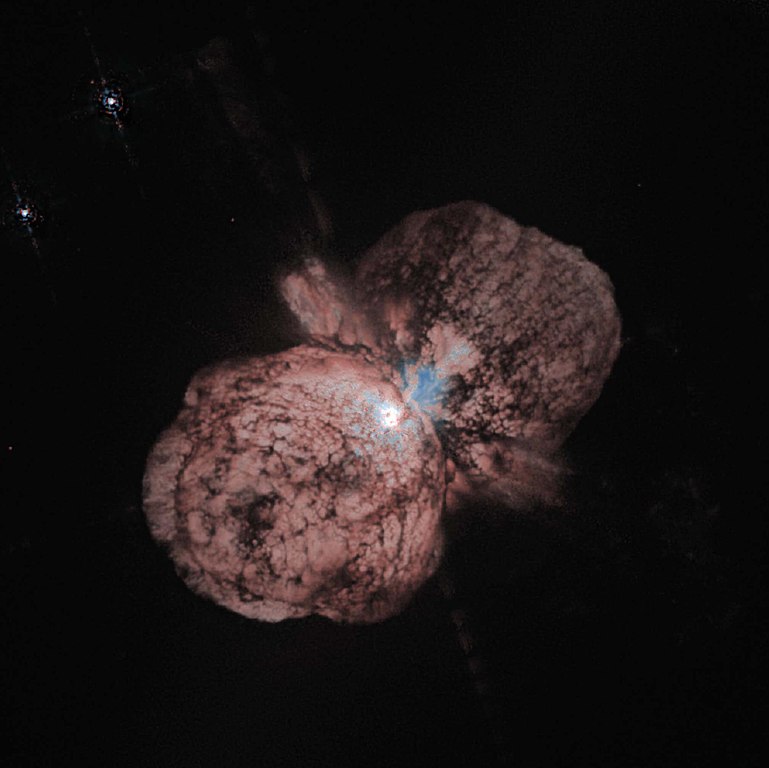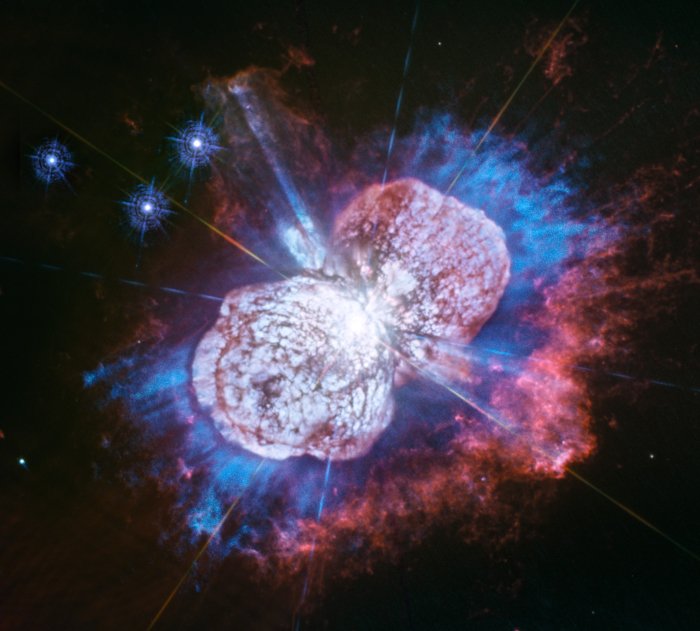A new image captured by the Hubble Space Telescope is revealing an entirely new side to a 200-year-old nebula. The Homunculus Nebula is about 7,500 light years from Earth and surrounds a dying binary star, Eta Carinae.
What is a nebula? What is a binary star? And just what new stuff is being revealed?
Nifty nebulas

Behold, the Oyster Nebula. (NASA)
A nebula is a massive cloud of ionized, or charged, gases in space.
Nebulas are usually connected to a star somehow. Some form around new stars that are being born. Others collect around stars that are dying and shedding material. And then there are others that form after a large star explodes, or goes supernova.
All of these nebulas are lit from within — whether by new stars or the dying cores of new ones. And this combination of ionized gases and brilliant light creates some of space's most spectacular sights.
Binary buddies

A computer image of the estimated orbits of the two stars that make up Eta Carinae. (Goddard Institute/NASA/Wikimedia Commons)
We're used to the idea of stars being loners. Take our Sun: it sits alone at the centre of a family of planets, comets, asteroids, and moons, controlling the fate of everything within billions and billions of kilometres.
But binary stars are different. Though they might look like a single point of light from Earth, these are a pair of stars locked in orbit around a central point, called a barycenter. Think of two stars caught in a life-long slow dance with each other. That's a binary star!
The binary star Eta Carniae is made of two enormous stars; the larger star, Carinae A, is about 130 to 220 times the mass of our Sun. Around 200 years ago — in 1838 — this binary star exploded, creating the Homunculus Nebula. Amazing though, the cores of these stars survived, meaning that they now illuminate the nebula from within.
What's so special about this image?

An image of Eta Carinae taken in 1995. Compare it with the one at the top of the post. What a difference ultraviolet makes, right? (NASA/Wikimedia Commons)
Astronomers have known about Eta Carinae for centuries. In the 1840s, it was the second brightest object in the night sky (before dimming again in the 1850s). And Hubble has taken pictures of it before, such as the one that you see above.
But this new ultraviolet pic is revealing features that weren't seen before. The vibrant blue in the new image is magnesium gas. You can see it surrounding the two giant lobes of the nebula — as well as flying out in streaks millions of kilometres long.
Now the big question is: What stuff are we missing in other nebulas? You can bet researchers will be using Hubble to find out!
From ultraviolet to ultraviolent?
Speaking of next big questions, what is the future of Eta Carinae? Scientists believe that it is only a matter of time before Carinae A goes supernova, an event that will change this nebula completely. Will we get to witness this spectacular explosion? We certainly hope so!
 This ultraviolet photo reveals huge collections of blue magnesium gas that were invisible in the past. (NASA, ESA, N. Smith/University of Arizona, J. Morse/BoldlyGo Institute)
This ultraviolet photo reveals huge collections of blue magnesium gas that were invisible in the past. (NASA, ESA, N. Smith/University of Arizona, J. Morse/BoldlyGo Institute)










So pretty (and really cool!.)
and really cool!
Cool
Never knew that! Good thing to learn it.
Cool!?
So awesome I love how cool it looks